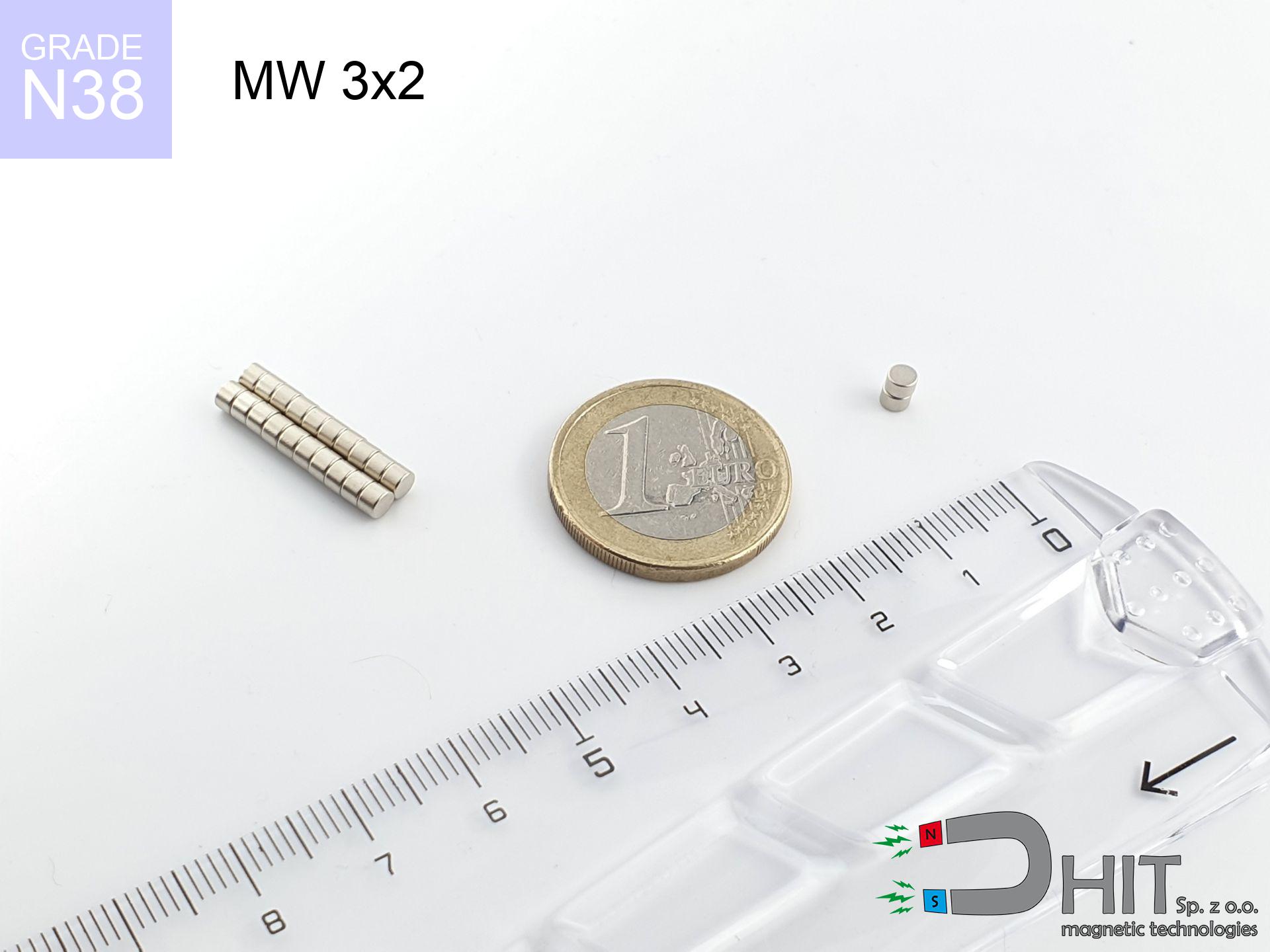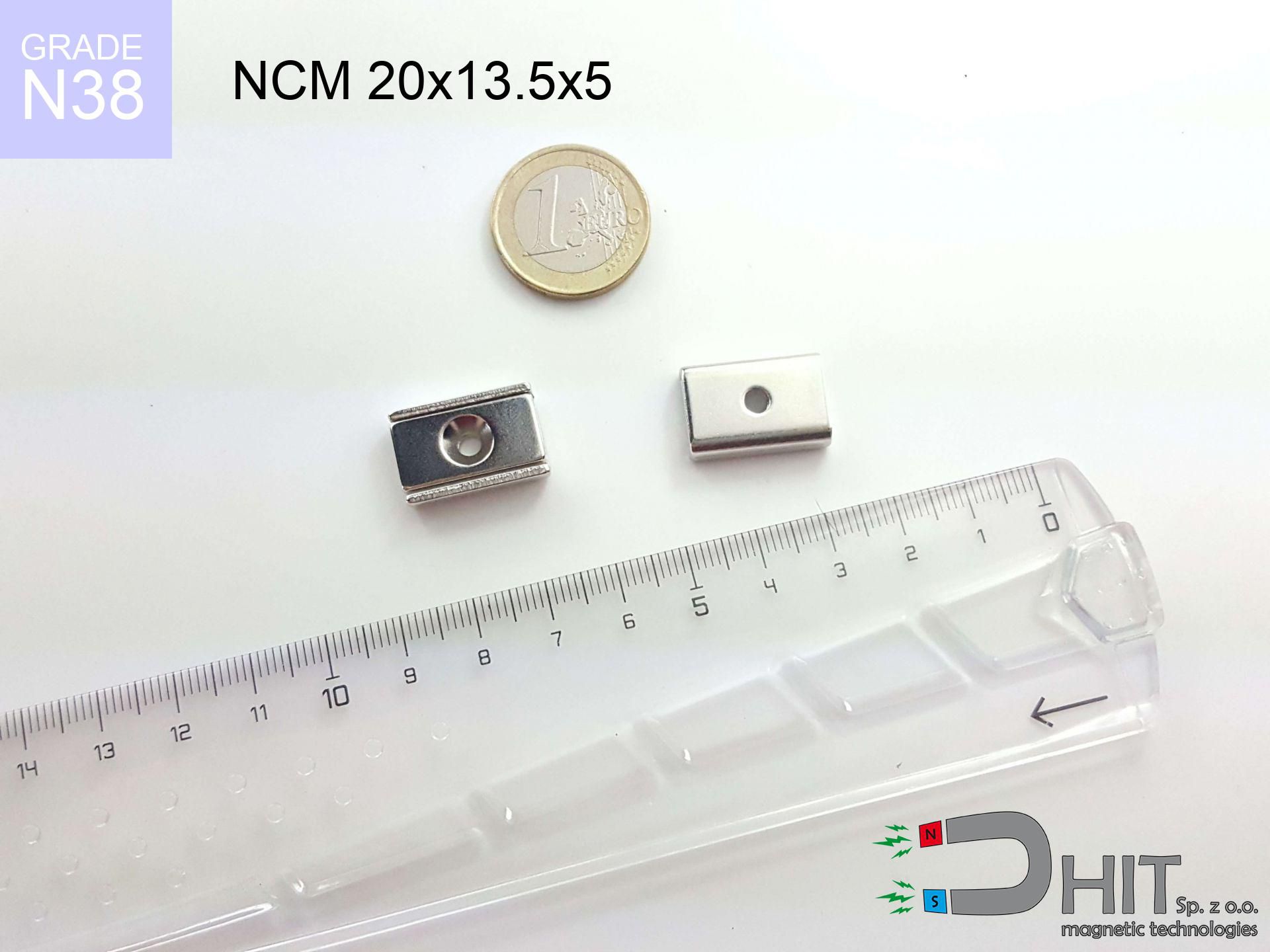UMGW 25x17x8 [M5] GW / N38 - magnetic holder internal thread
magnetic holder internal thread
Catalog no 180317
GTIN/EAN: 5906301813736
Diameter Ø
25 mm [±1 mm]
Height
17 mm [±1 mm]
Height
8 mm [±1 mm]
Weight
25.4 g
Load capacity
17.00 kg / 166.71 N
11.91 ZŁ with VAT / pcs + price for transport
9.68 ZŁ net + 23% VAT / pcs
bulk discounts:
Need more?
Contact us by phone
+48 888 99 98 98
or get in touch using
contact form
the contact page.
Strength along with appearance of a magnet can be estimated with our
our magnetic calculator.
Orders submitted before 14:00 will be dispatched today!
Technical data - UMGW 25x17x8 [M5] GW / N38 - magnetic holder internal thread
Specification / characteristics - UMGW 25x17x8 [M5] GW / N38 - magnetic holder internal thread
| properties | values |
|---|---|
| Cat. no. | 180317 |
| GTIN/EAN | 5906301813736 |
| Production/Distribution | Dhit sp. z o.o. |
| Country of origin | Poland / China / Germany |
| Customs code | 85059029 |
| Diameter Ø | 25 mm [±1 mm] |
| Height | 17 mm [±1 mm] |
| Height | 8 mm [±1 mm] |
| Weight | 25.4 g |
| Load capacity ~ ? | 17.00 kg / 166.71 N |
| Manufacturing Tolerance | ±1 mm |
Magnetic properties of material N38
| properties | values | units |
|---|---|---|
| remenance Br [min. - max.] ? | 12.2-12.6 | kGs |
| remenance Br [min. - max.] ? | 1220-1260 | mT |
| coercivity bHc ? | 10.8-11.5 | kOe |
| coercivity bHc ? | 860-915 | kA/m |
| actual internal force iHc | ≥ 12 | kOe |
| actual internal force iHc | ≥ 955 | kA/m |
| energy density [min. - max.] ? | 36-38 | BH max MGOe |
| energy density [min. - max.] ? | 287-303 | BH max KJ/m |
| max. temperature ? | ≤ 80 | °C |
Physical properties of sintered neodymium magnets Nd2Fe14B at 20°C
| properties | values | units |
|---|---|---|
| Vickers hardness | ≥550 | Hv |
| Density | ≥7.4 | g/cm3 |
| Curie Temperature TC | 312 - 380 | °C |
| Curie Temperature TF | 593 - 716 | °F |
| Specific resistance | 150 | μΩ⋅cm |
| Bending strength | 250 | MPa |
| Compressive strength | 1000~1100 | MPa |
| Thermal expansion parallel (∥) to orientation (M) | (3-4) x 10-6 | °C-1 |
| Thermal expansion perpendicular (⊥) to orientation (M) | -(1-3) x 10-6 | °C-1 |
| Young's modulus | 1.7 x 104 | kg/mm² |
Material specification
| iron (Fe) | 64% – 68% |
| neodymium (Nd) | 29% – 32% |
| boron (B) | 1.1% – 1.2% |
| dysprosium (Dy) | 0.5% – 2.0% |
| coating (Ni-Cu-Ni) | < 0.05% |
Sustainability
| recyclability (EoL) | 100% |
| recycled raw materials | ~10% (pre-cons) |
| carbon footprint | low / zredukowany |
| waste code (EWC) | 16 02 16 |
Other deals
Pros as well as cons of rare earth magnets.
Pros
- They do not lose magnetism, even after around 10 years – the decrease in power is only ~1% (theoretically),
- Magnets very well defend themselves against loss of magnetization caused by foreign field sources,
- By covering with a reflective coating of gold, the element acquires an nice look,
- Neodymium magnets create maximum magnetic induction on a small area, which allows for strong attraction,
- Through (adequate) combination of ingredients, they can achieve high thermal strength, allowing for operation at temperatures approaching 230°C and above...
- Thanks to freedom in designing and the capacity to modify to unusual requirements,
- Huge importance in high-tech industry – they are used in data components, electric drive systems, medical devices, and technologically advanced constructions.
- Relatively small size with high pulling force – neodymium magnets offer strong magnetic field in compact dimensions, which makes them useful in small systems
Cons
- They are prone to damage upon too strong impacts. To avoid cracks, it is worth protecting magnets in special housings. Such protection not only protects the magnet but also improves its resistance to damage
- We warn that neodymium magnets can lose their strength at high temperatures. To prevent this, we suggest our specialized [AH] magnets, which work effectively even at 230°C.
- Due to the susceptibility of magnets to corrosion in a humid environment, we recommend using waterproof magnets made of rubber, plastic or other material resistant to moisture, when using outdoors
- Due to limitations in creating threads and complex forms in magnets, we recommend using casing - magnetic holder.
- Possible danger related to microscopic parts of magnets can be dangerous, when accidentally swallowed, which becomes key in the aspect of protecting the youngest. It is also worth noting that small elements of these devices are able to be problematic in diagnostics medical after entering the body.
- Higher cost of purchase is a significant factor to consider compared to ceramic magnets, especially in budget applications
Holding force characteristics
Best holding force of the magnet in ideal parameters – what it depends on?
- on a plate made of structural steel, optimally conducting the magnetic flux
- possessing a massiveness of min. 10 mm to ensure full flux closure
- with an ground touching surface
- with direct contact (without impurities)
- under axial application of breakaway force (90-degree angle)
- at conditions approx. 20°C
Practical lifting capacity: influencing factors
- Gap (betwixt the magnet and the plate), as even a microscopic distance (e.g. 0.5 mm) can cause a decrease in force by up to 50% (this also applies to paint, corrosion or dirt).
- Angle of force application – maximum parameter is obtained only during pulling at a 90° angle. The force required to slide of the magnet along the surface is typically many times smaller (approx. 1/5 of the lifting capacity).
- Substrate thickness – to utilize 100% power, the steel must be sufficiently thick. Thin sheet limits the attraction force (the magnet "punches through" it).
- Steel grade – the best choice is pure iron steel. Stainless steels may generate lower lifting capacity.
- Surface finish – ideal contact is possible only on polished steel. Any scratches and bumps reduce the real contact area, weakening the magnet.
- Thermal factor – hot environment weakens magnetic field. Exceeding the limit temperature can permanently damage the magnet.
Lifting capacity testing was conducted on plates with a smooth surface of optimal thickness, under perpendicular forces, however under shearing force the load capacity is reduced by as much as 5 times. Moreover, even a minimal clearance between the magnet’s surface and the plate reduces the holding force.
Warnings
ICD Warning
Patients with a heart stimulator must keep an safe separation from magnets. The magnetic field can disrupt the functioning of the implant.
Finger safety
Large magnets can break fingers in a fraction of a second. Do not place your hand betwixt two strong magnets.
Permanent damage
Do not overheat. Neodymium magnets are susceptible to temperature. If you need resistance above 80°C, look for special high-temperature series (H, SH, UH).
Eye protection
NdFeB magnets are sintered ceramics, which means they are fragile like glass. Impact of two magnets will cause them shattering into small pieces.
Choking Hazard
Product intended for adults. Small elements pose a choking risk, leading to severe trauma. Keep away from kids and pets.
Keep away from computers
Do not bring magnets near a purse, laptop, or TV. The magnetism can irreversibly ruin these devices and erase data from cards.
GPS Danger
Navigation devices and smartphones are extremely sensitive to magnetism. Direct contact with a powerful NdFeB magnet can permanently damage the internal compass in your phone.
Dust explosion hazard
Drilling and cutting of neodymium magnets carries a risk of fire hazard. Magnetic powder reacts violently with oxygen and is hard to extinguish.
Powerful field
Before starting, check safety instructions. Uncontrolled attraction can break the magnet or hurt your hand. Think ahead.
Warning for allergy sufferers
Warning for allergy sufferers: The nickel-copper-nickel coating contains nickel. If an allergic reaction occurs, immediately stop handling magnets and wear gloves.

![Magnetic holder with internal thread UMGW 25x17x8 [M5] GW / N38 Magnetic holder with internal thread UMGW 25x17x8 [M5] GW / N38](https://cdn3.dhit.pl/graphics/banners/magnet.webp)
![UMGW 25x17x8 [M5] GW / N38 - magnetic holder internal thread](https://cdn3.dhit.pl/graphics/products/um-25x17x8-m5-gw-dob.jpg)
![UMGW 25x17x8 [M5] GW / N38 - magnetic holder internal thread - ujęcie 2](https://cdn3.dhit.pl/graphics/products/umgw-25x17x8-m5-gw-soh.jpg)


![SM 25x325 [2xM8] / N52 - magnetic separator SM 25x325 [2xM8] / N52 - magnetic separator](https://cdn3.dhit.pl/graphics/products/sm-25x325-2xm8-bit.jpg)
![UMGZ 32x18x8 [M6] GZ / N38 - magnetic holder external thread UMGZ 32x18x8 [M6] GZ / N38 - magnetic holder external thread](https://cdn3.dhit.pl/graphics/products/um-32x18x8-m6-gz-jix.jpg)

